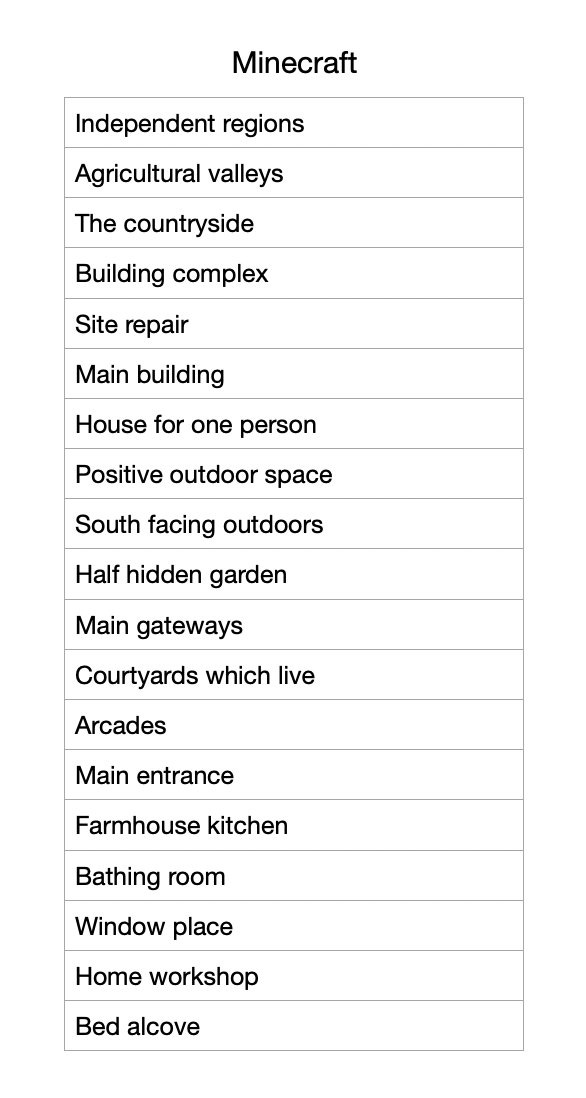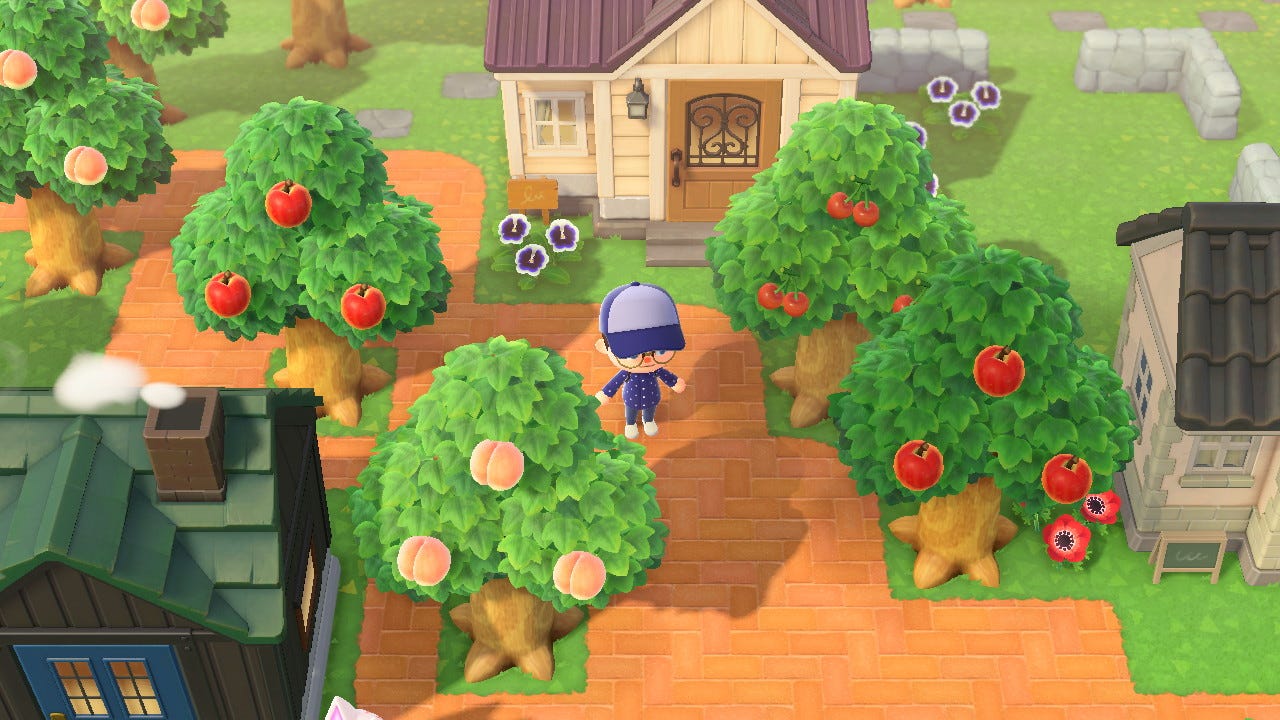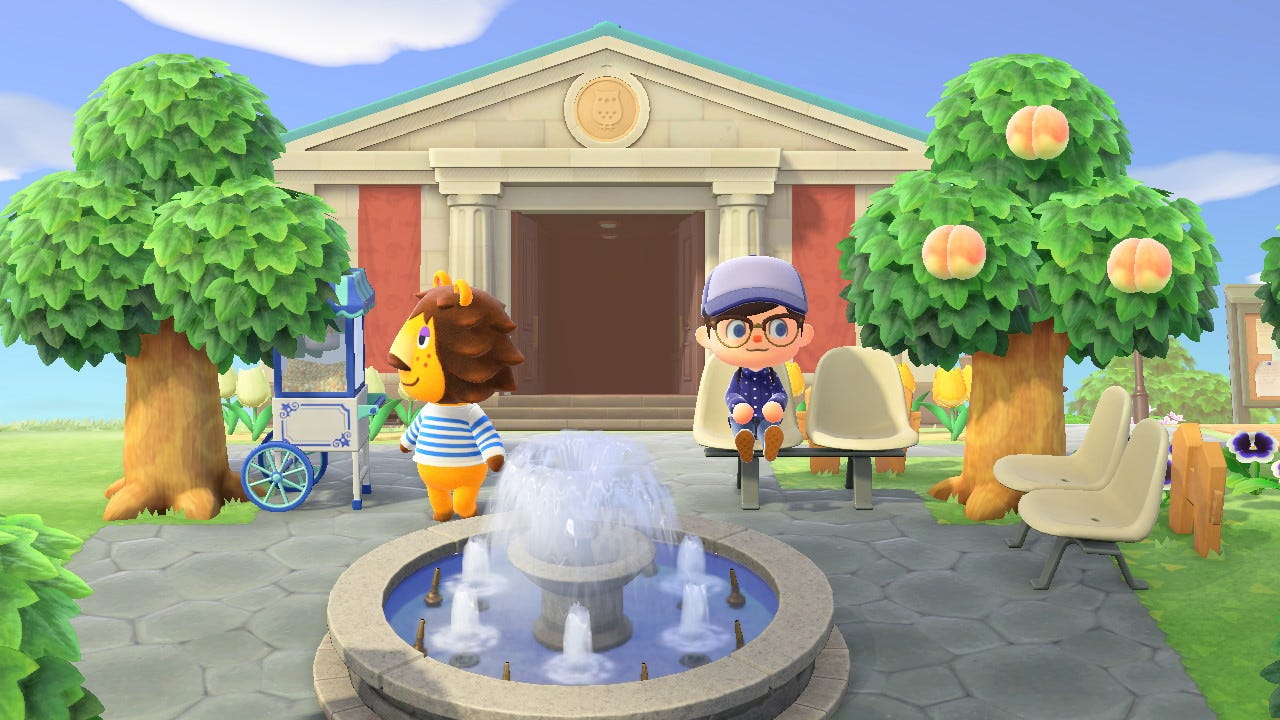Lately I’ve been playing Townscaper—a digital toy box game created by Oskar Stålberg in which you build a town one click and one building at a time. It’s a bit like LEGOs, a bit like creative mode in Minecraft, a bit like the Sims, but mostly like playing in a sandbox in the back yard. Buildings pop into life and organically merge into each other in new combinations as other buildings are clicked into place around them. It feels like shaping a town out of clay.


Why am I building a virtual town with no people in it when I could be building a real building or spending my time on some other “real” creative project? Well, because video games are fun, of course. I don’t want to spend too much time defending the value of playing video games—the fact that they’re fun is enough! But games are rich metaphorical spaces designed to help you enter a deeply rewarding flow state. They’re fun because they’re challenging, and they engage skills in a smooth flow of progression. Video games are a densely packed feedback loop for learning creative skills—by playing and practicing within the boundaries of the game, I can try out creative skills and experiment with approaches that I can then bring to “in real life” projects that are often mistakenly considered more “serious” than video games.
"Play is often talked about as if it were a relief from serious learning. But for children play is serious learning. Play is really the work of childhood."
Video games are a medium to experiment with problem solving strategies, get a taste of new skills, try out emerging roles and dimensions of self, and work out social cooperation patterns. Since video games often include a 2D or 3D environment, they’re particularly great for experiencing a virtual representation of what goes into building a physical 3D place. Just without all the messy supplies and sawdust.
Often what this means is sketching out a pattern language for what I’d like to create in the game, frequently borrowing from Christopher Alexander’s A Pattern Language, but also identifying patterns specific to the game. Sometimes this is limited by what the game world enables. Minecraft is a worldwide blockbuster primarily because of the open ended flexiblity of the game world combined with close-enough-to-reality physics and rules for how materials combine. Close enough because a game that tries to recreate every detail of how to make a cake would just be tedious—the point is to abstract just enough to make getting into flow a bit easier (as an example, here are three teenagers trying to create a cake following the exact recipe from Minecraft). In fact, it’s possible to create an instance of every pattern from A Pattern Language in Minecraft. A group of friends and I tried exactly that in a shared game world:
Even a slightly less open-ended game like Animal Crossing holds enough flexibility to practice the creative building cycle. It has a few more limitations than Minecraft, but is still endlessly emergent.
By playing video games, we can try out new approaches and get repetitions on practicing a vast array of creative habits and skills. Through these repetitions, video games can help you learn skills that might help you write a novel, learn how to draw, or run a business. In these games, I can try out all the suggestions Christopher Alexander provides in The Timeless Way of Building and The Nature of Order, but in a way that’s tied to a real experience with a real project so I can gain my own understanding through practice rather than as a nice-sounding idea. The cycle of iteration is fast, approachable, and, of course, fun. These are video games after all.
Creative lessons from Townscaper
Which brings me back to Townscaper. When I first started playing, I had just been reading and writing about practicing awareness of the whole as a key creative skill. So as I stared at the blank canvas the game provides, I thought to myself, “Ah ha! I know what to do. I’ll zoom all the way out and start sketching the town from the widest possible view! That will really be something special because I’ll be developing the whole thing together.”
I tried filling in the entire extent of the game map, and sketching out some rough neighborhoods or sections within the map. Maybe a river passing through the middle? But the clicking was so slow. It didn’t have the fluency of a fast and large paint brush to make wide rough passes, it took ages to sketch out each section and see how it felt in relation to the whole. It was like trying to fill a twenty foot canvas with individual dots from a pencil. And then once it was sketched out and I started to click in actual buildings, they looked ridiculous on their own in comparison to the vast grey sketch. In trying to create a unified whole, the size of the whole was so out of proportion to its internal relationships that everything felt disjointed, isolated, and absurd.
I had hit a dead end—a familiar feeling in creative strategy. Something I was doing wasn’t working. Something in my mental model of how to approach the creative task was incomplete. What I was doing didn’t go with the grain of the game or with the tools available. The game actively discourages a wide angle view: as soon as you click a single block into the emptiness, the camera zooms right back in to that single block. But the reason I was stuck went deeper than that. I realized that awareness of the whole doesn’t always mean it’s possible or effective to work from the absolute biggest scale to the smallest scale. It depends on the overall scale of the project, and the scale of your tools.
Some projects are a small enough scale that you can sketch out the whole and work your way inward, differentiating smaller sections and centers as you go. Some projects are so big that their largest centers are out of proportion with their smallest centers, the scale of sizes is so great, that they need to be approached by more of a middle-out strategy. Both cellular multiplication outward and cellular subdivision inward. At this size, while you might have an idea of the whole through a high level outline (like a list of patterns in a pattern language), when it’s time to actually build the focus should be on the human scale with periodic check ins with the much larger whole.
Thumbnail sketches vs. giant life-sized portraits. Casual newsletters vs. book-length published manuscripts. No one builds a town, they build streets, neighborhoods, and buildings. The town emerges from those individual steps. Even in A Pattern Language, Christopher Alexander emphasizes that the larger patterns can only emerge from the individual actions of individual people and smaller groups, and that developing those patterns requires a different approach than those of building-scale or smaller. In a game designed for a single person to build a town like Townscaper, the approach still applies because of the scale and behavior of the game. You don’t place buildings with a giant brush stroke, you place them through a single click at a time. You don’t have the tools to shape each individual brick on each house, but you also don’t have the tools to build an entire neighborhood at once.
So, I adjusted my approach. I still sketched out a pattern language, a list of named centers I might like to see emerge in my town, but I focused on one building at a time and one cluster or neighborhood of buildings at a time. As I placed each one, I considered the building the game generated. I thought about its color, how the size of it felt, and how it changed the shape of the relationships with the other nearby buildings. I limited my perspective while keeping a background awareness of the next larger set of patterns. I kept my attention at the human scale.
Once did this, something unexpected happened. The larger patterns I tried to force to happen by looking at the widest possible view started to suggest themselves in the specific places they might fit best. I tried them out, adjusted them, and after each one, more centers started to feel as though they were ready to emerge nearby. I watched as I clicked and the patterns slowly formed themselves through each single act of building.
I had assumed the best approach was always to sketch the largest possible centers first, so that everything within could be shaped in relation to the whole. And I learned that this strategy works up until a certain point where the entire whole is too big to approach at the human scale. So in those cases, it’s best to keep checking in with the whole, but primarily focus on smaller sections while building to develop both inward and outward.
It was also a reminder that at a large, emergent scale, we can only ever sketch out what we hope might emerge. Every creative process is improvisatory, but the larger the scale physically or over time, the less we can predict and the more we need to roll with what shows up and adjust our plan.
I’m not exactly sure the best way to put this lesson into words, but it’s helped me better understand creative skills for large projects. How do you write a newsletter post like this one (room or building scale) vs. writing a book (neighborhood or city scale)? How do you write a small website or build a large new software tool? In large creative projects, I think the lessons from Townscaper—awareness of the whole (through a rough outline or pattern language) while working at the human scale (sections I can hold in my own two hands or my own memory at once)—would be a useful model and experience to draw from.
These sketched lessons are now something I can take away and practice again in writing, painting, or any other larger project I might be diving into, and will likely end up as notes in my working notes on creativity. And I’ll be looking to spend my rainy Sunday afternoons playing video games more often…

















